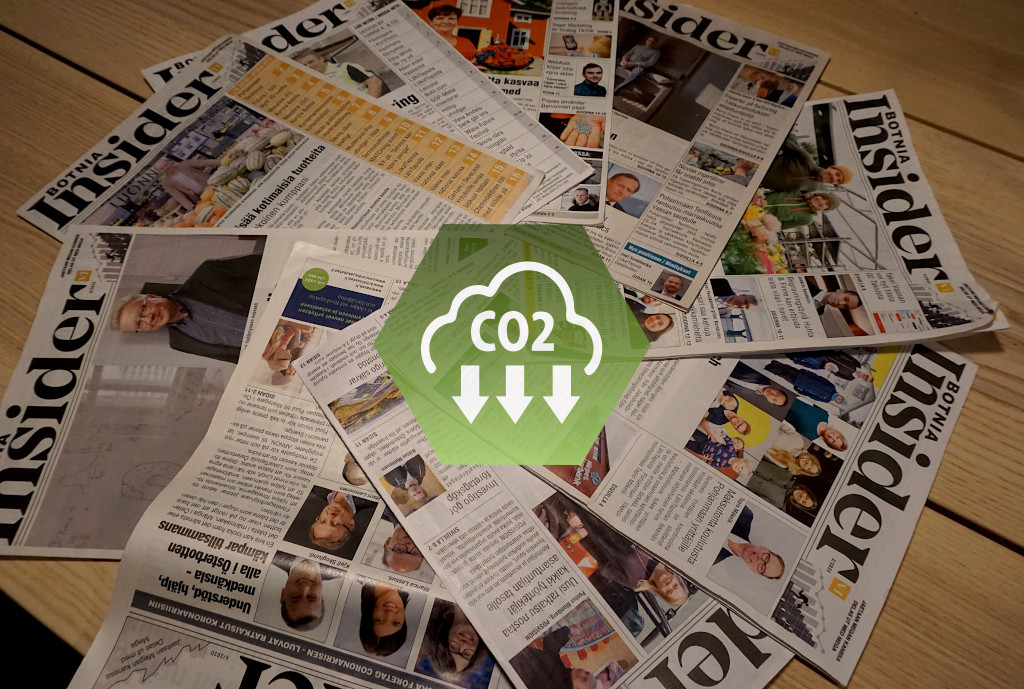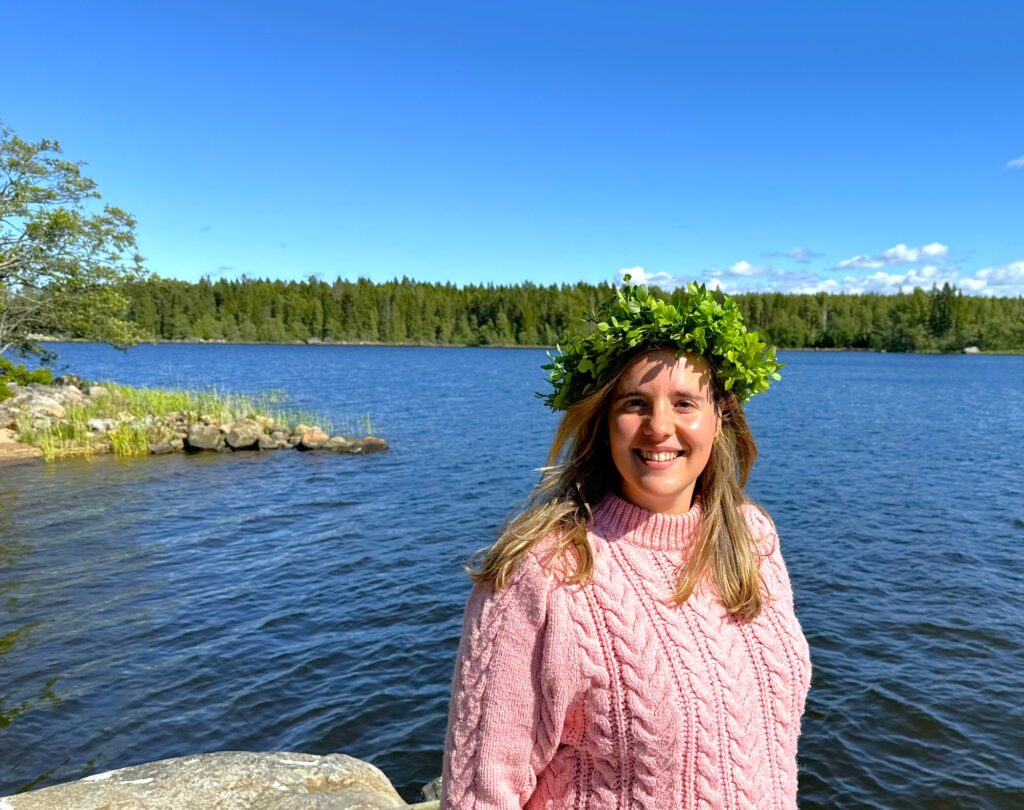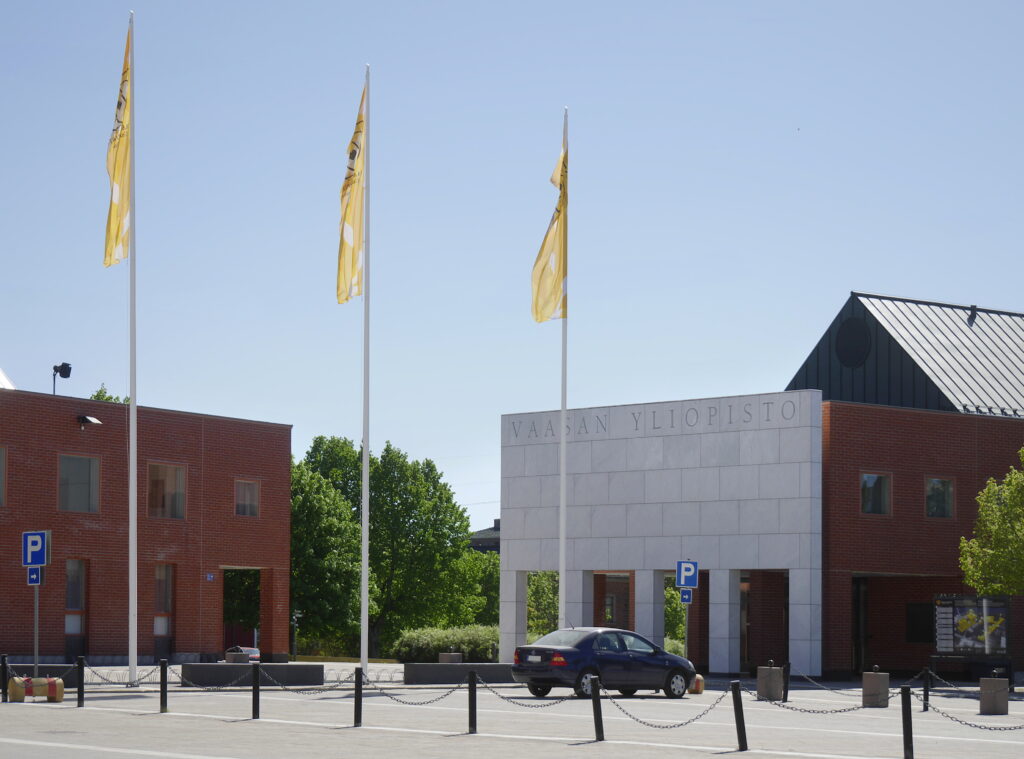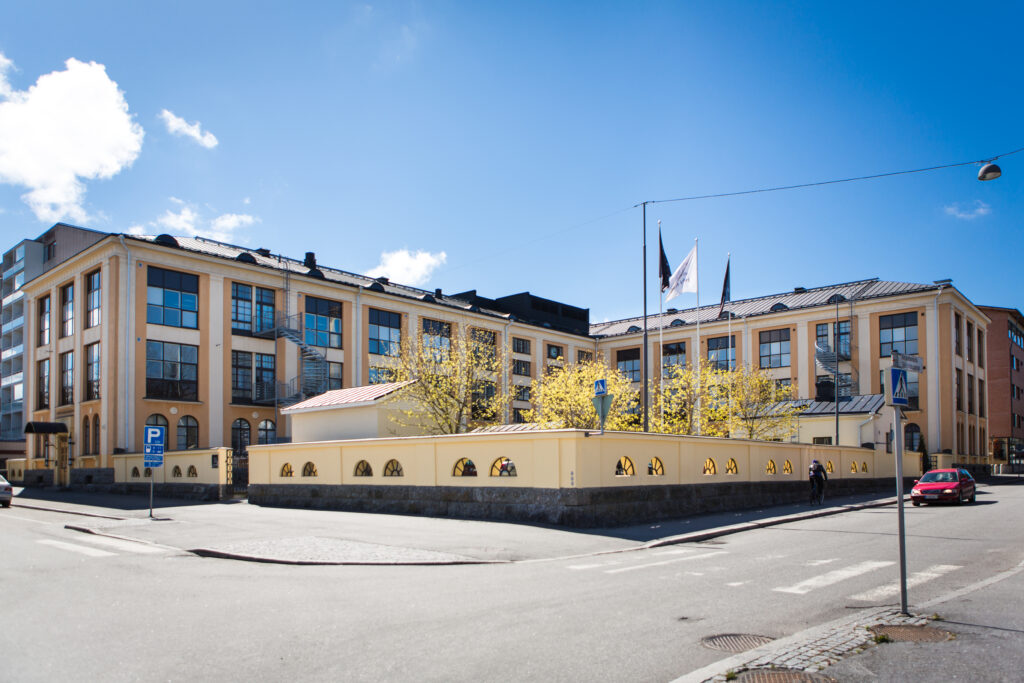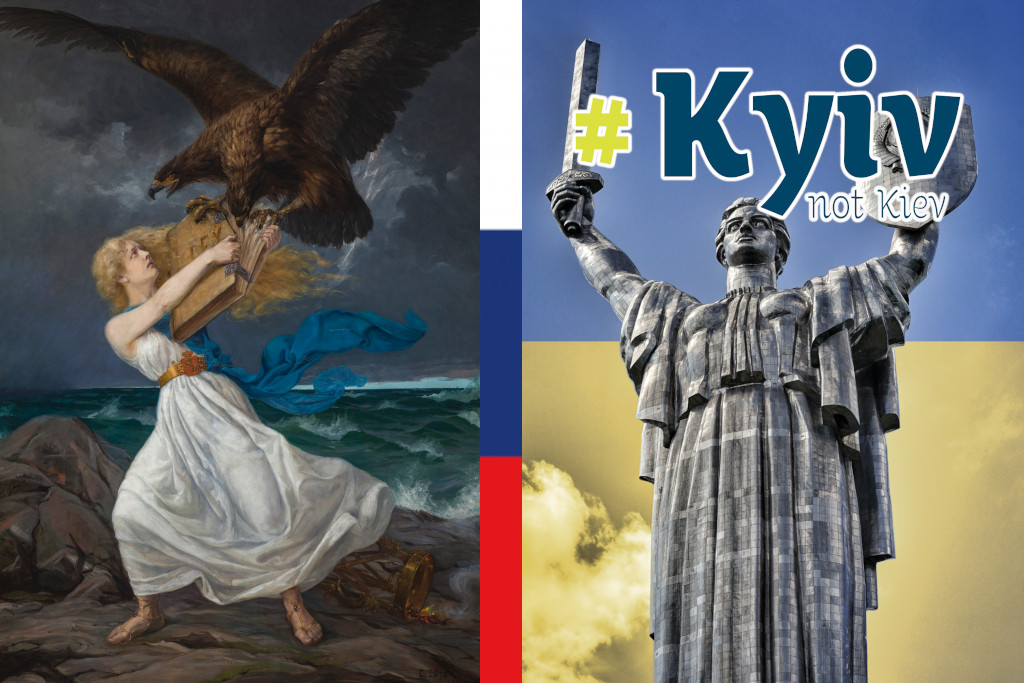Finnish business publication Botnia Insider proudly announced last week that they have reached a milestone in their sustainability work. Recognising the complexities involved in accurately assessing the carbon footprint of an individual newspaper, the media company has undertaken innovative measures to significantly reduce its environmental impact.
A copy of Botnia Insider now has a smaller carbon footprint than a slice of cheese.
Effective storytelling through bilingual news and local business insights
Botnia Insider is a bilingual newspaper that serves as a bridge between communities, offering a platform for innovative companies and organisations to share their message. Alongside its engaging editorial articles, the publication aims to foster meaningful connections within the Vaasa region and Ostrobothnia.
Delivered directly to the doorsteps of over 70,000 homes in the vibrant area, completely free of charge to readers, Botnia Insider ensures widespread access. In addition to the print edition, Botnia Insider provides an online edition published on the same day.
Peter Stolpe, the editor-in-chief of Botnia Insider, explains that the commitment to sustainability has been unwavering from the start.
Given the substantial volume of our publication, it has been our utmost priority to ensure that the newspaper is produced with the highest level of environmental consciousness. A copy of Botnia Insider now has a smaller carbon footprint than a slice of cheese.

Pioneering environmental leadership in print media
Botnia Insider, in collaboration with local printing partner UPC Print, has emerged as a trailblazer in environmental and sustainability initiatives.
According to Stolpe, the process of calculating the comprehensive carbon footprint proved to be more intricate than anticipated.
“Calculating the entire carbon footprint of a printed newspaper is considerably more complicated than it sounds,” Stolpe says.
To tackle this task, Vaasa Insider joined forces with partners and received support from the Centre for Economic Development, Transport and the Environment (ELY-keskus).
Divided the work into three steps
To shed light on the carbon footprint of the newspaper, Botnia Insider commissioned three distinct investigations. Local company LYKKAN meticulously calculated the editorial office’s carbon footprint linked to the newspaper, while UPC Print examined the figures specific to the printing press and distribution processes. Additionally, the IT company Black Label Bytes scrutinised the final stage after the newspaper leaves the reader and ultimately faces recycling or disposal.
“Only by combining all these data points can we obtain a comprehensive overview of the true carbon footprint,” Stolpe explains.
Assessing the impact – with and without environmental measures
Calculations of the carbon footprint have been carried out both with all the environmental measures that have already been taken and considering a scenario without these measures. The results revealed that without the implemented environmental efforts, adhering to standard industry practices, the carbon footprint per newspaper would amount to 41.8 grams of carbon dioxide equivalents (CO2e).
However, due to the extensive measures already undertaken, the carbon footprint has been significantly reduced to just 23.7 grams of CO2e per newspaper.
Putting the carbon footprint in perspective
When it comes to enjoying a newspaper at the breakfast table, Botnia Insider sets an environmentally friendly example. In comparison to popular accompaniments like coffee and cheese, the publication boasts a significantly smaller carbon footprint.
Research conducted by University College London indicates that a regular espresso emits 280 grams of CO2e, while a slice of cheese contributes 200 grams, according to the WWF’s diet calculator. In contrast, the climate impact of the Botnia Insider amounts to just 23.7 grams of CO2e.
Stolpe, an enthusiast of both coffee and cheese, emphasises that the intention is not to blame any specific industry but rather to provide a meaningful comparison using these numbers. He highlights the importance of acknowledging the recyclability of paper.
It’s worth noting that paper represents one of the most recycled materials in our society, potentially bringing us closer to achieving a circular economy. Having calculated the exact carbon footprint of each copy of our newspaper opens new possibilities for us to take further strides along our sustainability journey.
Ostrobothnian collaboration to offset CO2 emissions
LYKKAN, in collaboration with Finnish pilot farms, offers companies a unique opportunity to offset their greenhouse gas emissions through local, regenerative cultivation practices.
Recognising the significance of sustainability, Vaasa Insider and LYKKAN have joined forces to implement climate measures targeting carbon sequestration equivalent to the full carbon footprint of the latest issue of Botnia Insider. This commitment extends throughout the year, encompassing all forthcoming publications.

